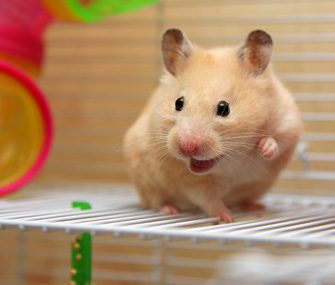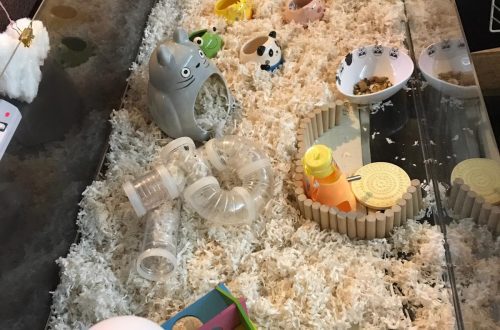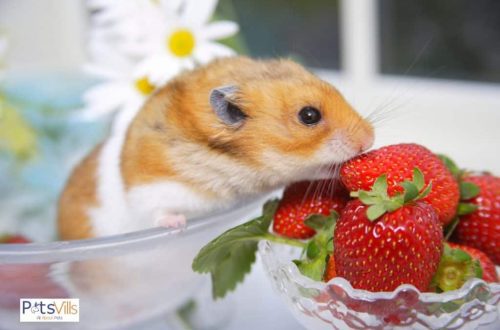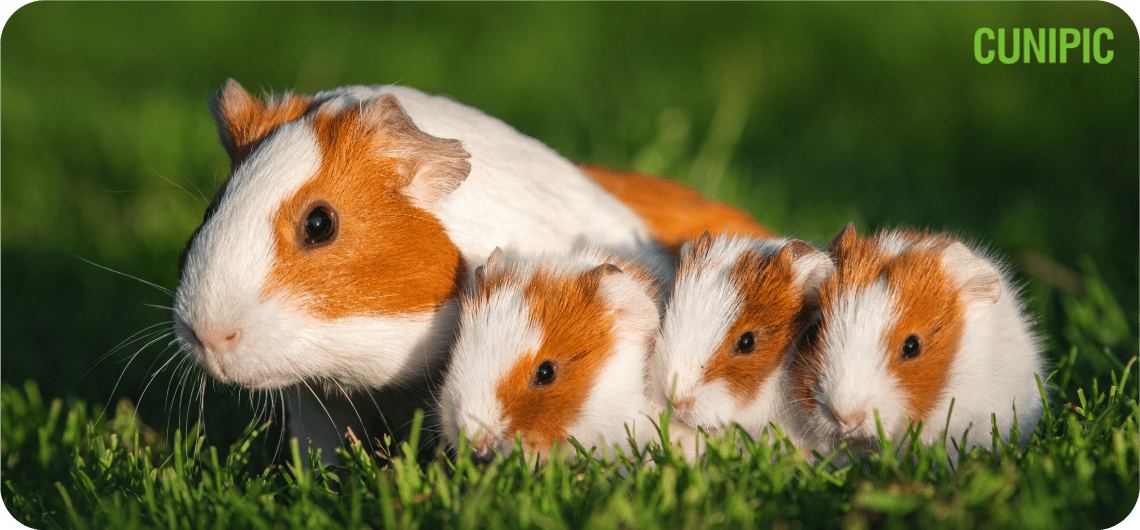
Improving survival rates in newborn guinea pigs
Written by Roger Boraston
Our experience with gilt breeding was so dramatic that we decided that it would be of interest to everyone, and therefore wrote this article.
Our attention was drawn to one alarming trend, which we noticed while summing up the results of the year. One female lost two of her cubs at birth, another lost all six of her cubs, and the third gave birth prematurely and since we did not expect this, the female was kept in the same cage with a male who killed all the cubs after they were born (at least we assume that this this was the case, since all the cubs died as a result of the attack). That is, the survival rate of cubs did not exceed 40% per year. And that’s not counting the females that died during childbirth. Surely something had to be done!
Another year passed, at the end of which our friend called us from Wales to find out how his female was doing, which he left with us to mate with a suitable male, since he did not want to acquire a male of this breed. The voice on the phone sounded alarmed, since this man had lost a lot of his females and cubs over the previous year, and his concern was not unfounded. I was able to answer that the birth began two days before the expected date, but despite this, the female gave birth to four healthy piglets. Both mother and children are doing well. And in fact, none of the 32 pups born to our gilts have died in the past year, bringing the survival rate over the past 12 months to 93% compared to 40% last year. 52 piglets were born and only 4 of them died.
Written by Roger Boraston
Our experience with gilt breeding was so dramatic that we decided that it would be of interest to everyone, and therefore wrote this article.
Our attention was drawn to one alarming trend, which we noticed while summing up the results of the year. One female lost two of her cubs at birth, another lost all six of her cubs, and the third gave birth prematurely and since we did not expect this, the female was kept in the same cage with a male who killed all the cubs after they were born (at least we assume that this this was the case, since all the cubs died as a result of the attack). That is, the survival rate of cubs did not exceed 40% per year. And that’s not counting the females that died during childbirth. Surely something had to be done!
Another year passed, at the end of which our friend called us from Wales to find out how his female was doing, which he left with us to mate with a suitable male, since he did not want to acquire a male of this breed. The voice on the phone sounded alarmed, since this man had lost a lot of his females and cubs over the previous year, and his concern was not unfounded. I was able to answer that the birth began two days before the expected date, but despite this, the female gave birth to four healthy piglets. Both mother and children are doing well. And in fact, none of the 32 pups born to our gilts have died in the past year, bringing the survival rate over the past 12 months to 93% compared to 40% last year. 52 piglets were born and only 4 of them died.
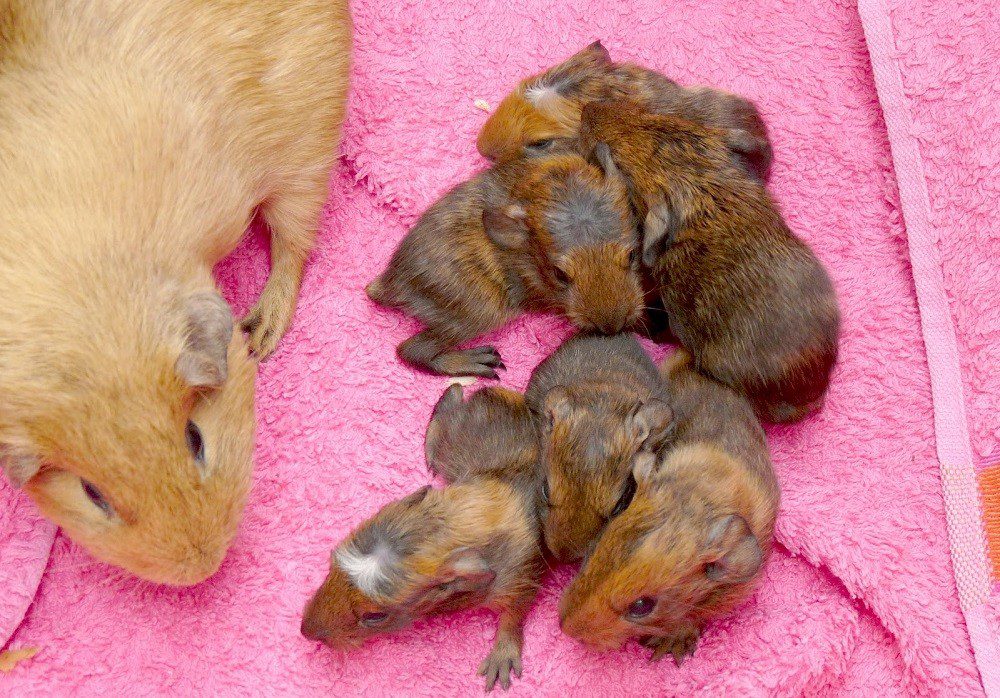
I want to talk about how we achieved such improvements.
And for a backstory to all of the above and below, I’ll go back to when we first started breeding pet guinea pigs for my daughter, 20 years ago. Despite the fact that sometimes we made some mistakes, for example, in feeding, we still succeeded in some things. Often we let our pigs run around in our garden or pen. This kept the gilts in good shape and the females gave birth to strong, healthy babies without any problems. But we also kept females and males together all the time, which led to the re-fertilization of the female who had just given birth, and very often she died a short time after the second birth.
These two parameters (body condition and stress) were the cause of our problems when we started breeding show grade gilts. We bought a shed in which we intended to put cages that we made ourselves. But, unfortunately, the construction process began after we started breeding, and it became clear that the cause of the bad shape of the gilts and stress was the overcrowding of the existing cages, and we decided to concentrate on this.
And the event that prompted us to do this was when my daughter Becky brought in a pregnant pig for sale from the pet store where she works. She was very young, nervous and not quite healthy. We placed her in a separate room, fed her separately, although she had the opportunity to see the others, and also only occasionally let her run around with the others. She soon got into good shape, as if she had been acquired from a good nursery, and bore her children easily. When it was time to give birth, everything went very smoothly, and the children were large and healthy, which was somewhat surprising for her size and age.
This happened just before our “premises review”. I took out all our old cages and in those where the partitions were solid, I replaced them with partitions with windows for the pigs so that they could see each other. This allowed our pregnant females, who were placed in separate rooms, to see the rest. This allowed us to wean females early in pregnancy, when she was barely defined, and not keep the gilt with the rest until the last. We became so confident in the correctness of our actions that we allowed one of our strong and well-fed females to give birth at four months, which we had never allowed ourselves before and had not even dreamed of. She easily gave birth to four healthy and strong babies.
So, what were, in our opinion, the reasons for the low survival rate of cubs in litters? Here are four main examples where we managed to solve the problem one way or another:
Case one
Two females, who always lived together and were very friendly, were mated with the same male, and in order not to separate the friends, we left them to live and give birth in the same cage. As it turned out, this was the cause of the ensuing tragedy. The first female gave birth to cubs without problems, but the born babies excited the second pig so much that she began labor activity earlier than she should have begun, she unsuccessfully tried to give birth to her babies, not ready for childbirth, and as a result we lost both the female and and her cubs.
The first female nursed her children, but since then we have learned that it is impossible to allow two females to give birth in the same cage, as there is always a risk that something will go wrong. Therefore, we seat pregnant women in different cages, allowing them to see each other through the cracks. In our experience, this does not hinder or harm them in any way.
Case two
The mother giving birth for the first time gave birth to one pig, but could not free him from the birth membranes so that he could breathe. Unfortunately, we arrived too late to help. We immediately put her to mating with the male, and this was our only case when the female, after an immediate re-mating, gave birth to healthy piglets without any problems and remained alive herself.
Cases three and four
These two cases can be combined together: The only difference is that one of the females was slightly overfed and we tried to bring her back to normal. Maybe one of the reasons that led her to death was precisely this. In any case, we isolated two females from their males as soon as we were able to diagnose their pregnancy. We placed them in different cages and immediately noticed how their appetite and mood deteriorated sharply, they sat with their noses in the corner and looked very upset and dejected, and they did not have any health problems. In the end, one female, very experienced and giving birth several times, gave birth to four cubs, of which only one survived (and then with our help), while the other died.
The reason for this we see a sharp separation from the male and a change in the cage, so now we always, when we want to put a pregnant female, first we put her in a new room with the male, and when she gets used to it a little, we put him in an adjacent cage.
That is, it turns out that by building a small window between the cages so that the pigs can see and communicate with each other, we thereby solve a very important problem of isolation for pregnant pigs. Some pigs are encouraged by the presence of a second girlfriend, some by a male, and some by a group of animals. The presence of a neighbor (neighbors) improves mood, although some pigs prefer loneliness and an independent existence. At the very least, such communication dramatically reduces stress during pregnancy.
After counting all the births, deaths, purchased and sold gilts in our kennel in recent years, we realized that the number of gilts has changed a lot, and the number of cages has increased a lot. One difficulty that you will constantly face when breeding pigs is that you will never have enough free cages!
© Translation by Alexandra Belousova
I want to talk about how we achieved such improvements.
And for a backstory to all of the above and below, I’ll go back to when we first started breeding pet guinea pigs for my daughter, 20 years ago. Despite the fact that sometimes we made some mistakes, for example, in feeding, we still succeeded in some things. Often we let our pigs run around in our garden or pen. This kept the gilts in good shape and the females gave birth to strong, healthy babies without any problems. But we also kept females and males together all the time, which led to the re-fertilization of the female who had just given birth, and very often she died a short time after the second birth.
These two parameters (body condition and stress) were the cause of our problems when we started breeding show grade gilts. We bought a shed in which we intended to put cages that we made ourselves. But, unfortunately, the construction process began after we started breeding, and it became clear that the cause of the bad shape of the gilts and stress was the overcrowding of the existing cages, and we decided to concentrate on this.
And the event that prompted us to do this was when my daughter Becky brought in a pregnant pig for sale from the pet store where she works. She was very young, nervous and not quite healthy. We placed her in a separate room, fed her separately, although she had the opportunity to see the others, and also only occasionally let her run around with the others. She soon got into good shape, as if she had been acquired from a good nursery, and bore her children easily. When it was time to give birth, everything went very smoothly, and the children were large and healthy, which was somewhat surprising for her size and age.
This happened just before our “premises review”. I took out all our old cages and in those where the partitions were solid, I replaced them with partitions with windows for the pigs so that they could see each other. This allowed our pregnant females, who were placed in separate rooms, to see the rest. This allowed us to wean females early in pregnancy, when she was barely defined, and not keep the gilt with the rest until the last. We became so confident in the correctness of our actions that we allowed one of our strong and well-fed females to give birth at four months, which we had never allowed ourselves before and had not even dreamed of. She easily gave birth to four healthy and strong babies.
So, what were, in our opinion, the reasons for the low survival rate of cubs in litters? Here are four main examples where we managed to solve the problem one way or another:
Case one
Two females, who always lived together and were very friendly, were mated with the same male, and in order not to separate the friends, we left them to live and give birth in the same cage. As it turned out, this was the cause of the ensuing tragedy. The first female gave birth to cubs without problems, but the born babies excited the second pig so much that she began labor activity earlier than she should have begun, she unsuccessfully tried to give birth to her babies, not ready for childbirth, and as a result we lost both the female and and her cubs.
The first female nursed her children, but since then we have learned that it is impossible to allow two females to give birth in the same cage, as there is always a risk that something will go wrong. Therefore, we seat pregnant women in different cages, allowing them to see each other through the cracks. In our experience, this does not hinder or harm them in any way.
Case two
The mother giving birth for the first time gave birth to one pig, but could not free him from the birth membranes so that he could breathe. Unfortunately, we arrived too late to help. We immediately put her to mating with the male, and this was our only case when the female, after an immediate re-mating, gave birth to healthy piglets without any problems and remained alive herself.
Cases three and four
These two cases can be combined together: The only difference is that one of the females was slightly overfed and we tried to bring her back to normal. Maybe one of the reasons that led her to death was precisely this. In any case, we isolated two females from their males as soon as we were able to diagnose their pregnancy. We placed them in different cages and immediately noticed how their appetite and mood deteriorated sharply, they sat with their noses in the corner and looked very upset and dejected, and they did not have any health problems. In the end, one female, very experienced and giving birth several times, gave birth to four cubs, of which only one survived (and then with our help), while the other died.
The reason for this we see a sharp separation from the male and a change in the cage, so now we always, when we want to put a pregnant female, first we put her in a new room with the male, and when she gets used to it a little, we put him in an adjacent cage.
That is, it turns out that by building a small window between the cages so that the pigs can see and communicate with each other, we thereby solve a very important problem of isolation for pregnant pigs. Some pigs are encouraged by the presence of a second girlfriend, some by a male, and some by a group of animals. The presence of a neighbor (neighbors) improves mood, although some pigs prefer loneliness and an independent existence. At the very least, such communication dramatically reduces stress during pregnancy.
After counting all the births, deaths, purchased and sold gilts in our kennel in recent years, we realized that the number of gilts has changed a lot, and the number of cages has increased a lot. One difficulty that you will constantly face when breeding pigs is that you will never have enough free cages!
© Translation by Alexandra Belousova



